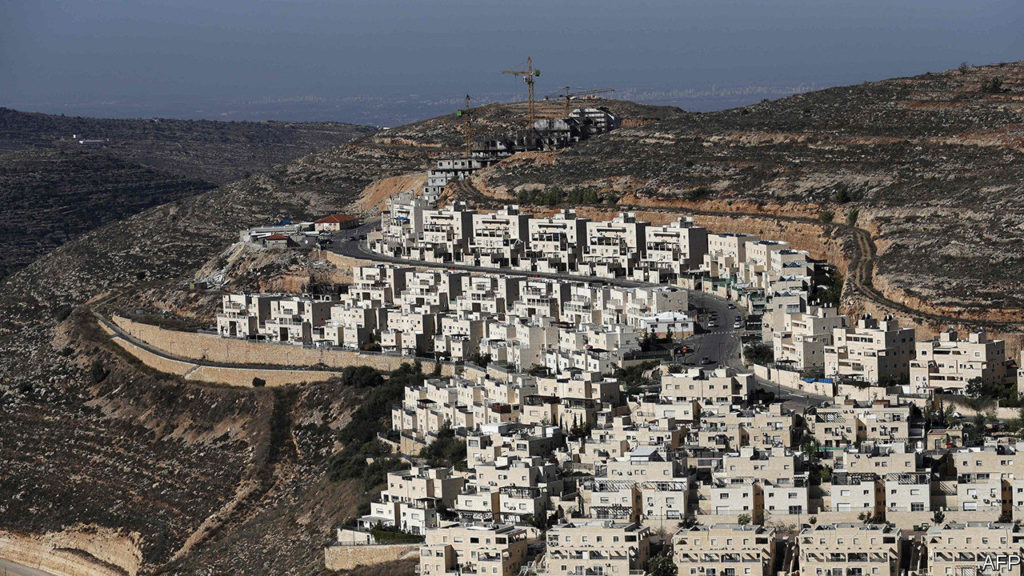Australia/Israel Review
Scribblings: The ‘Settlements Killed Two States’ Lie
Oct 29, 2020 | Tzvi Fleischer

It has become a widely proclaimed truism that the growth of Israeli settlements in the West Bank over recent years has destroyed any hopes for a two-state Israeli-Palestinian peace.
A look at the totality of the actual evidence, as opposed to cherry-picked claims about raw settler numbers, shows this is obviously untrue, as AIJAC has repeatedly documented.
Israeli scholar Shany Mor of the Israel Democracy Institute has done a remarkably clear and comprehensive job of assembling the evidence that demolishes this lie in a newly published essay responding to recent writings by American anti-Zionist Peter Beinart (“Peter Beinart’s Grotesque Utopia” Medium, Sept. 17). It is worth quoting his key points at some length:
• “Twenty-five years ago, during the Oslo peace process, developed areas of Israeli settlements took up less than 2% of West Bank land. There were at the dawn of Oslo a total of 118 settlements in the West Bank (figures are taken from Peace Now’s invaluable settlement database). In 2000, when [Palestinian leader Yasser] Arafat rejected a peace deal that would have created a Palestinian state in the West Bank and Gaza Strip, built-up settlement areas were still just under 2% of West Bank land and the total number was 123. Today, the settlements still take up less than 2% of West Bank land, and the total number is somewhere around 127… The geographical distribution of Jews in the West Bank has not materially changed at all in the past 27 years (1993–2020).”
• “Just as the geography didn’t change very much in the past three decades, nor did the demography. The Jewish population of the West Bank and East Jerusalem has been steady at roughly 15% throughout the past three decades … after a dramatic increase in the previous three (from zero). The place where the demographic balance changed, interestingly, is inside Israel, where the Arab population grew in the same period from 17% to 22%.”
• “The number of Israelis settling in the West Bank has dropped rather dramatically in the past generation. In 1996, 6,000 Israelis migrated from Israel into the West Bank; twenty years later in 2016 that number fell to only 2000. Nearly all the growth of Jewish population in the West Bank has been from births, not from ‘settling’ at all.”
• “Looking just at the past fifteen years…nearly all the population growth was concentrated in two ultra-Orthodox settlements with high birth rates, Beitar Ilit and Modiin Ilit… I urge everyone to open up a map and look where those two are. One starts about 600 meters from the old armistice line and the other about 700 metres.”
Mor is actually personally quite critical of the settlement enterprise, terming it a “moral and strategic catastrophe for Israel.” Yet, as he says:
“If a two-state solution was geographically and demographically possible in 1993, it was still possible in 2000. And if it was possible in 2000, it was still possible in 2008. And if it was possible in 2008, it was still possible in 2014, and it is still possible now. Nothing on the ground has changed in those years to affect the feasibility of partition except for the rapid disentanglement in the 1990s of the Palestinian and Israeli economies… and this … makes two states more, not less, feasible.”
Those falsely claiming that settlements have destroyed any hope for a two-state peace often follow up with the claim that, because of this reality, there must be a “one-state solution” whereby Israel, the West Bank and Gaza will be replaced by a “state with equal rights for all citizens,” which would inevitably have a Palestinian majority. This is, in fact, a sophisticated-sounding new variation on the old disingenuous PLO demand that Israel must be eradicated and replaced by a “secular democratic state in all of Palestine.”
Thus, anyone who tells you settlements have destroyed all hopes for a two-state peace likely either has a sinister agenda themselves, or has been grossly misled by someone who does.
More Palestinian money madness
Last month in this column I discussed how the Palestinian Authority (PA) was self-destructively refusing to accept Palestinian tax money collected by Israel to supposedly protest Israeli plans to extend sovereignty to parts of the West Bank – even though Israel has suspended any such plans for at least the next few years.
This is not the only way in which the PA is turning down desperately needed money for strange reasons. The PA is also insisting that Palestinian NGOs reject aid money rather than agree not to give that money to terrorists.
The European Union and its member states, who provide most of the funding for most Palestinian NGOs, have recently been insisting that NGOs that take their money sign a clause saying they will not give that money to EU-recognised terrorist groups. This demand is long overdue – there is ample evidence of aid to Palestinian NGOs ending up with members of internationally-banned terrorist groups, especially the Popular Front for the Liberation of Palestine (PFLP) which is highly active in the Palestinian NGO sector.
However, the PA’s Civil Society Organisations Commission, headed by Major General Sultan Abu Al-Enein, is threatening Palestinian NGOs not to agree to the European conditions for funding. Speaking to the official PA news agency WAFA on Oct. 12, Al-Enein said if groups accepted such conditional funding, it would be a “national betrayal and a departure from the national ranks, and will not pass without punishment… the competent authorities will work to prosecute these institutions.”
The Palestinians have been heavily dependent on international aid of various sorts for a long time – and their sense of entitlement to it seems to have reached dangerous and self-destructive levels.






